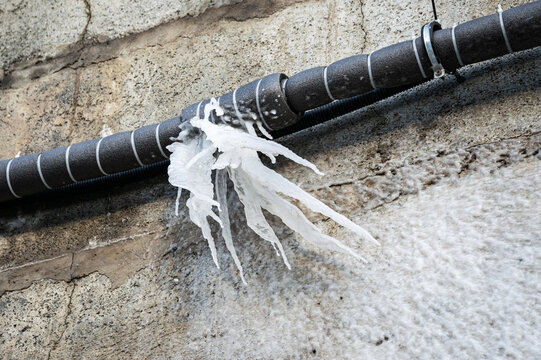Tips to Prevent Frozen Pipes in Cold Weather: Professional Tips
Tips to Prevent Frozen Pipes in Cold Weather: Professional Tips
Blog Article
How do you really feel in regards to Winter Plumbing Precautions: Preventing Frozen Pipes?

Winter can wreak havoc on your pipes, especially by freezing pipelines. Here's exactly how to prevent it from taking place and what to do if it does.
Introduction
As temperature levels decrease, the danger of icy pipes boosts, potentially resulting in pricey fixings and water damages. Recognizing how to prevent icy pipelines is crucial for property owners in chilly climates.
Comprehending Icy Pipelines
What causes pipes to ice up?
Pipes ice up when subjected to temperatures listed below 32 ° F (0 ° C) for expanded durations. As water inside the pipes freezes, it increases, taxing the pipeline wall surfaces and possibly creating them to break.
Risks and problems
Frozen pipes can bring about supply of water disturbances, residential property damages, and pricey repair services. Burst pipes can flood homes and create substantial structural damage.
Indications of Frozen Pipeline
Recognizing frozen pipelines early can stop them from bursting.
How to determine icy pipes
Look for reduced water circulation from faucets, unusual odors or noises from pipelines, and visible frost on subjected pipelines.
Prevention Tips
Protecting at risk pipes
Wrap pipes in insulation sleeves or use heat tape to shield them from freezing temperature levels. Focus on pipelines in unheated or exterior areas of the home.
Home heating techniques
Maintain indoor areas appropriately heated, particularly areas with pipes. Open closet doors to permit cozy air to flow around pipes under sinks.
Protecting Outdoor Plumbing
Yard hoses and outside taps
Disconnect and drain garden hose pipes before winter. Set up frost-proof faucets or cover exterior faucets with protected caps.
What to Do If Your Pipes Freeze
Immediate activities to take
If you believe frozen pipelines, keep faucets open to relieve stress as the ice thaws. Make use of a hairdryer or towels soaked in hot water to thaw pipelines gradually.
Long-Term Solutions
Structural modifications
Consider rerouting pipes far from exterior walls or unheated locations. Include additional insulation to attic rooms, cellars, and crawl spaces.
Upgrading insulation
Invest in top notch insulation for pipelines, attic rooms, and wall surfaces. Correct insulation helps keep constant temperature levels and reduces the threat of frozen pipelines.
Final thought
Avoiding frozen pipes requires aggressive measures and quick responses. By recognizing the reasons, indicators, and preventive measures, house owners can protect their pipes throughout winter.
5 Ways to Prevent Frozen Pipes
Drain Outdoor Faucets and Disconnect Hoses
First, close the shut-off valve that controls the flow of water in the pipe to your outdoor faucet. Then, head outside to disconnect and drain your hose and open the outdoor faucet to allow the water to completely drain out of the line. Turn off the faucet when done. Finally, head back to the shut-off valve and drain the remaining water inside the pipe into a bucket or container. Additionally, if you have a home irrigation system, you should consider hiring an expert to clear the system of water each year.
Insulate Pipes
One of the best and most cost-effective methods for preventing frozen water pipes is to wrap your pipes with insulation. This is especially important for areas in your home that aren’t exposed to heat, such as an attic. We suggest using foam sleeves, which can typically be found at your local hardware store.
Keep Heat Running at 65
Your pipes are located inside your walls, and the temperature there is much colder than the rest of the house. To prevent your pipes from freezing, The Insurance Information Institute suggests that you keep your home heated to at least 65 degrees, even when traveling. You may want to invest in smart devices that can keep an eye on the temperature in your home while you’re away.
Leave Water Dripping
Moving water — even a small trickle — can prevent ice from forming inside your pipes. When freezing temps are imminent, start a drip of water from all faucets that serve exposed pipes. Leaving a few faucets running will also help relieve pressure inside the pipes and help prevent a rupture if the water inside freezes.
Open Cupboard Doors
Warm your kitchen and bathroom pipes by opening cupboards and vanities. You should also leave your interior doors ajar to help warm air circulate evenly throughout your home.

We hope you enjoyed reading our piece on Prevent Frozen Pipes . Thank you for taking a few minutes to read through our content. Remember to take the opportunity to share this page if you appreciated it. We thank you for reading our article about Winter Plumbing Precautions: Preventing Frozen Pipes.
Request Free Estimate Report this page